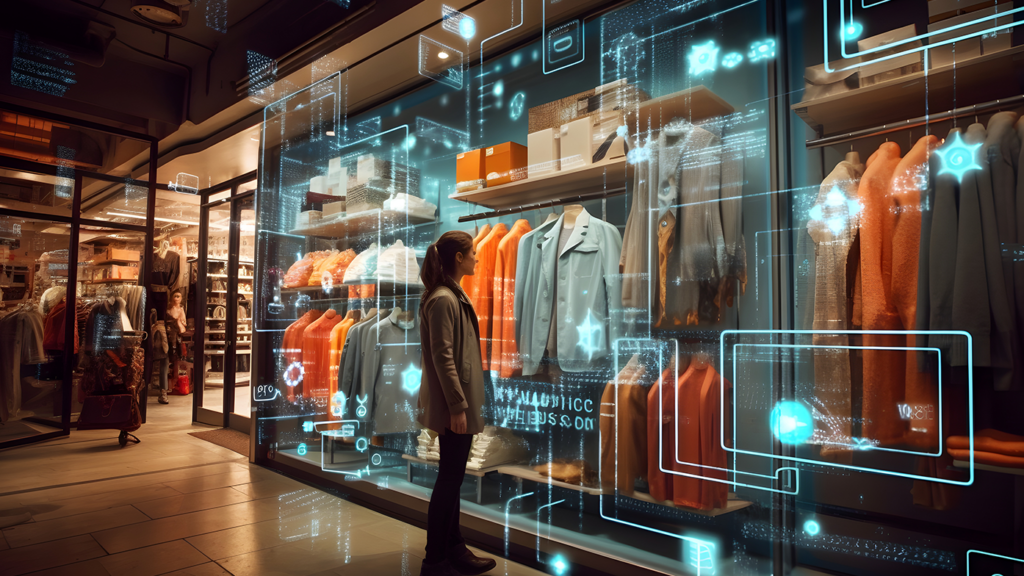The retail landscape in 2023, compelled by the stabilization of e-commerce, adapted its physical stores to accommodate changing consumer behaviors. National chains downsized their footprints, falling to a new historically low average of 3200 square feet.
Retailers embraced the showrooming trend, converting their stores into experience centers. Smaller footprints appealed to educated consumers seeking to interact with products before making a spending decision. Brands continue to transform brick-and-mortar by right-sizing, merchandising their stores and integrating technologies to serve customers better. IKEA’s third store concept, Plan & Order’s 8,900 SF store footprint, aims to accommodate those consumers who know what they’re looking for. The Swedish retailer’s expansion will include four Plan & Order points with pickup locations across Austin, Atlanta, and Los Angeles.
Technology Takeover
Technological influences impacted retail, lending a hand in reimagining the in-store experience. Retailers adapted rapidly, leveraging data from online purchases, social media trends, and in-store traffic to tailor their inventories to meet the needs of each local community. They created deeply immersive environments for consumers to browse products and research in real-time, with the option to seamlessly click to purchase on their smartphones for convenient home delivery. Some retailers like fast fashion giants H&M and Zara leaned into AI solutions to interpret their qualitative data to predict customers’ wants impacting product SKU additions and managing their supply chain more effectively.
The Advancement of Experiential Retail
Experiential retail advanced into food and dining experiences amplified with gamification elements to attract the competitive socializing set. Restaurants partnered with hospitality concepts from race car simulations to wave surfing, daring to wow consumers with a new level of entertainment. Augmented and virtual reality concepts bring travel destinations to diners through video wall and tabletop installations. According to Data Essentials, more than 50% of consumers are interested in revisiting an ‘eatertainment’ experience.
With an Eye on the Future
Technology and experience will continue to influence retail in 2024. We tapped into a panel of peer experts across the Colliers ecosystem to share what’s on their radar this year.
On demand for commercial real estate: Leasing is full-on, specifically with smaller, more sophisticated tenants. We’re seeing an increase in sales, closely matching pre-pandemic levels. Tenants are looking to save, save, save, paying closer attention to project operating costs. The more nimble local landlords are snapping up deals, offering less but closing faster.
On the revitalization of central business districts: Urban markets are still experiencing a lag in recovery. Cities and municipalities must focus on larger initiatives and city street infrastructure, partnering with landlords and developers to bring consumers in to support their assets. Retailers will come if they see foot traffic and a commitment from the city to bring people downtown.
On the state of retail and office: The future of office retail lies in vibrant mixed-use developments that combine hospitality, residential, office, and retail spaces. Dynamic hubs with engaging amenities like museums, entertainment venues, and experiential spaces. To revitalize office occupancy, landlords and building owners must strategically partner with established local retailers, especially in the food and beverage sector.
In Conclusion
Technology and personalization efforts will continue to shape the retail in-store experience and the broader ecosystem. Consumers can expect an evolving seamless integration between online and physical channels and innovative experiential offerings. This transition will necessitate ongoing adaptation from retailers and landlords.
For additional insight into retail trends, check out the latest Retail Recorded podcast and our recent report on The Interdependency of Office and Retail: Leveraging Mutual Benefits for Recovery Growth.

 Anjee Solanki
Anjee Solanki

 Nicole Larson
Nicole Larson
